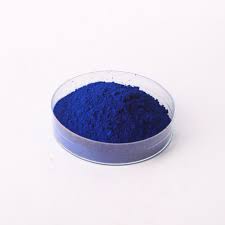Sustainable Denim Production in Indigo Factories for Eco-Friendly Fashion
The Art of Indigo Exploring the World of Jeans and Blue Indigo Factories
Denim has long been synonymous with style, comfort, and rugged durability. Yet, one cannot discuss the fabric without bringing up its rich heritage rooted in indigo dyeing. The blue hue that characterizes jeans is made possible by natural indigo, a pigment that has been cultivated and cherished for centuries. In this article, we will explore the world of jeans production, the significance of blue indigo, and the factories that bring this classic garment to life.
The Journey from Plant to Pigment
Indigo dyeing dates back over 6,000 years, with its origins in ancient civilizations across Asia, Africa, and South America. Indigofera plants, the source of the dye, flourish in tropical and subtropical climates, particularly in regions like India and West Africa. The process of extracting indigo is labor-intensive, requiring the leaves to be fermented to convert indican into a soluble form of indigo. This dyeing method is steeped in tradition, often passed down through generations.
Once extracted, the indigo dye can then be applied to textiles in various ways, including the famous shibori technique or through the more modern method of rope dyeing. The latter is particularly popular in jean production, where the yarn is dyed multiple times to achieve that characteristic deep blue shade. This patience in dyeing is essential; the fabric must be dyed to perfection to maintain colorfastness and provide the desired aesthetic when worn.
Jeans A Timeless Icon
The history of jeans is as vibrant and colorful as the indigo used to create them. Originally designed as hard-wearing pants for miners and laborers in the late 19th century, jeans have since transcended their utilitarian roots to become a global fashion staple. From the classic straight leg to the modern skinny and high-waisted styles, jeans are versatile garments that cater to various tastes and preferences.
The production of jeans involves several steps, including weaving the denim fabric, cutting it into patterns, stitching the various components, and finally, finishing the garment with washes and treatments for that sought-after vintage look. It is during these stages that the significance of indigo shines through; jeans develop a unique character as they age, with fades and whiskering patterns emerging naturally with wear and washing.
jeans blue indigo factories

The Role of Factories
The production of denim is not merely a mechanical process; it is an art form that resides in the factories where jeans are brought to life. In these manufacturing hubs, skilled artisans and technicians work symbiotically, ensuring that each pair of jeans has the perfect fit and finish. Many factories have embraced sustainable practices and technologies to reduce their environmental footprint, reflecting the growing consumer demand for eco-friendly products.
Blue indigo factories, in particular, are the backbone of this industry. They specialize in dyeing fabrics using traditional and modern techniques, creating the rich blues that are emblematic of denim. Some factories have gone a step further by practicing “zero discharge” principles, ensuring that water used in the dyeing process is recycled and treated to minimize pollution. These sustainable operations underscore the changing tides in the fashion industry, where consumers are increasingly concerned about the ecological impacts of fast fashion.
The Future of Indigo and Denim
As we move further into the 21st century, the future of jeans and indigo dyeing looks promising. Innovations in dye technology, such as synthetic indigo that is less harmful to the environment, are being explored. At the same time, there is a resurgence of interest in natural indigo and traditional dyeing techniques, with many brands seeking to honor the cultural significance of this ancient practice.
Jean enthusiasts and environmental advocates alike are beginning to champion the idea of a “slow fashion” movement, which prioritizes quality over quantity. This trend encourages consumers to invest in well-made, timeless jeans rather than disposable fast-fashion pieces. With this shift in mindset, the legacy of indigo dyeing and denim production is likely to endure, intertwining tradition with modernity in the fabric of our lives.
In conclusion, the world of jeans is a tapestry woven with history, culture, and innovation, anchored by the age-old art of indigo dyeing. As factories continue to evolve, and as consumers become more discerning, the journey of denim, from the fields of indigofera to the streets of fashion, will remain an ever-evolving narrative—one that celebrates both craftsmanship and sustainability.
-
The Timeless Art of Denim Indigo Dye
NewsJul.01,2025
-
The Rise of Sulfur Dyed Denim
NewsJul.01,2025
-
The Rich Revival of the Best Indigo Dye
NewsJul.01,2025
-
The Enduring Strength of Sulphur Black
NewsJul.01,2025
-
The Ancient Art of Chinese Indigo Dye
NewsJul.01,2025
-
Industry Power of Indigo
NewsJul.01,2025
-
Black Sulfur is Leading the Next Wave
NewsJul.01,2025

Sulphur Black
1.Name: sulphur black; Sulfur Black; Sulphur Black 1;
2.Structure formula:
3.Molecule formula: C6H4N2O5
4.CAS No.: 1326-82-5
5.HS code: 32041911
6.Product specification:Appearance:black phosphorus flakes; black liquid

Bromo Indigo; Vat Bromo-Indigo; C.I.Vat Blue 5
1.Name: Bromo indigo; Vat bromo-indigo; C.I.Vat blue 5;
2.Structure formula:
3.Molecule formula: C16H6Br4N2O2
4.CAS No.: 2475-31-2
5.HS code: 3204151000 6.Major usage and instruction: Be mainly used to dye cotton fabrics.

Indigo Blue Vat Blue
1.Name: indigo blue,vat blue 1,
2.Structure formula:
3.Molecule formula: C16H10N2O2
4.. CAS No.: 482-89-3
5.Molecule weight: 262.62
6.HS code: 3204151000
7.Major usage and instruction: Be mainly used to dye cotton fabrics.

